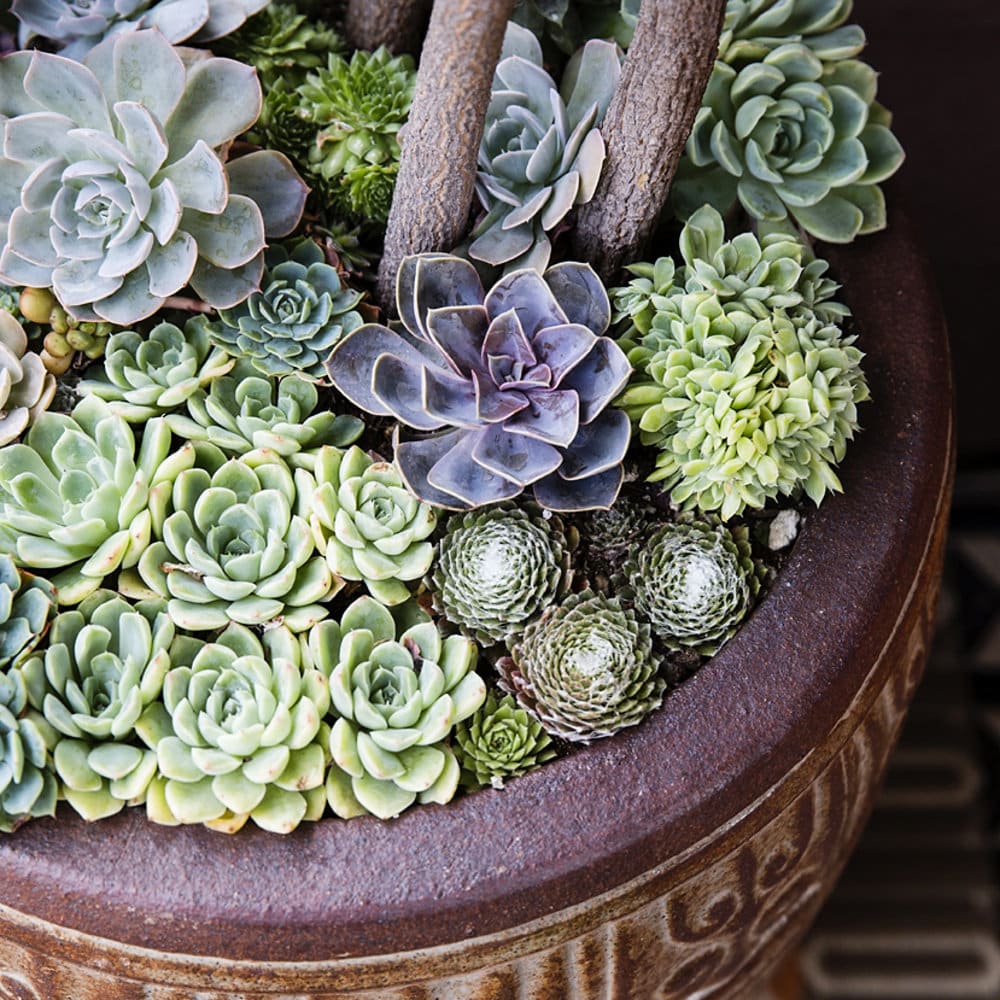
Source gardeningsoul.com
Succulent plants have gained immense popularity among gardening enthusiasts for their unique beauty and low maintenance requirements. With their thick and fleshy leaves, succulents are adapted to arid climates and are tolerant of neglect. However, proper care and attention are still essential to ensure their longevity and vibrant growth. In this comprehensive guide, we will explore the best practices and techniques for caring for succulent plants, from choosing the right soil to providing adequate sunlight and water.
1. Choosing the Perfect Succulent Species
Understanding the Needs of Different Succulent Species
There are numerous types of succulent plants available, each with its own specific care requirements. Before diving into the world of succulent care, it’s crucial to familiarize yourself with the needs of different species. Some succulents prefer bright indirect light, while others thrive in full sun. Some species require more frequent watering, while others can withstand long periods of drought. Understanding these variations will help you provide tailored care to your specific collection.
Popular Succulent Species for Beginners
For novice succulent enthusiasts, it’s advisable to start with varieties that are known for their resilience and forgiving nature. Here are a few popular succulent species that are ideal for beginners:
- Echeveria
- Sedum
- Aloe
- Haworthia
- Crassula
These species are relatively easy to care for and provide a great starting point for your succulent journey.
2. Setting Up the Ideal Environment
Providing Adequate Sunlight
Succulents are sun-loving plants that thrive in bright light conditions. Place your succulent collection in an area that receives at least six hours of indirect sunlight per day. South-facing windowsills, balconies, or patios are often ideal locations for succulents to ensure they receive sufficient light for proper growth.
Choosing the Right Soil and Pot
Succulents have unique soil requirements due to their low water needs and susceptibility to root rot. It’s essential to use a well-draining soil mix specifically formulated for succulents. Such mixes usually contain a combination of sand, perlite, and peat moss to promote excellent drainage. Additionally, choosing a pot with drainage holes will prevent water from accumulating at the roots, further reducing the risk of rot.
3. Watering and Maintenance
Understanding Succulent Watering Needs
Watering is a critical aspect of succulent care. Unlike other houseplants, succulents prefer infrequent but deep watering. Overwatering can lead to root rot and other issues, so it’s crucial to understand the watering needs of your specific succulent species. As a general rule, wait for the soil to dry out completely between waterings and ensure thorough drainage to prevent waterlogged conditions.
Fertilizing Succulents
Succulent plants have modest fertilization requirements. During the active growing season, which typically spans from spring to fall, you can provide a diluted succulent-specific fertilizer once per month. However, it’s important to avoid excessive fertilization as it can lead to leggy growth and other adverse effects.
Table: Common Succulent Species and Their Watering Needs
| Succulent Species | Watering Frequency |
|---|---|
| Echeveria | Once every 10-14 days |
| Sedum | Once every 7-10 days |
| Aloe | Once every 14-21 days |
| Haworthia | Once every 14-21 days |
| Crassula | Once every 10-14 days |
Frequently Asked Questions (FAQ)
1. How often should I water my succulent plants?
Watering frequency varies depending on the species and environmental conditions. As a general guideline, allow the soil to dry out completely between waterings, and then water thoroughly.
2. Can I keep my succulents indoors?
Absolutely! Succulents can thrive indoors when given adequate light. Choose a bright spot near a window for optimal growth.
3. Do succulents need any special fertilizers?
Succulent-specific fertilizers are available, but they are not essential. A balanced, diluted fertilizer can be applied during the active growing season if desired.
4. How do I propagate succulents?
Succulents can be easily propagated by taking stem or leaf cuttings. Allow the cuttings to callous for a few days before planting them in a well-draining soil mix.
5. What should I do if my succulent’s leaves are turning yellow?
Yellowing leaves can be a sign of overwatering or inadequate sunlight. Adjust your watering schedule or move the plant to a brighter location to resolve the issue.
Conclusion
Caring for succulent plants can be an enjoyable and rewarding experience. By understanding the unique needs of different succulent species, providing the ideal environmental conditions, and practicing proper watering and maintenance techniques, you can ensure that your succulent collection thrives and remains vibrant for years to come. Incorporate these tips and tricks into your care routine and watch as your succulents flourish and become stunning focal points in your home or garden.